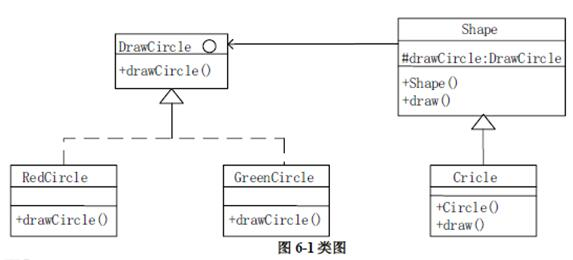若类A和类B的定义如下: class A { int i,j; public: void get(); //… } ; class B:A//默认为私有派生 { int k; public: void make(); //… }; void B::make() { k=i*j; } 则上述定义中, ( )是非法的表达式。
A.void get();
B.int k;
C.void make();
D.k=i*j;
第1题:
若类A和类B的定义如下,则上述定义中, 是非法的表达式。 class A { int i,j; public: void get(); //… }; class B : A //默认为私有派生 { int k; public: void make(); //… }; void B :: make() { k=i*j;}
A.void get();
B.int k;
C.void make();
D.k=i*j;
第2题:
37、若类A和类B的定义如下: class A { int i,j; public: void get(); file://… }; class B:A//默认为私有派生 { int k; public; void make(); file://… }; void B:: make() { k=i*j;} 则上述定义中,()是非法的表达式。
A.void get();
B.int k;
C.void make();
D.k=i*j;
第3题:

第4题:


第5题:
若类A和类B的定义如下: class A { int i, public: void get(); / /... }; class B:A//默认为私有派生 { int k; public: void make(); / /... }; void B: :make() { k=i*j; } 则上述定义中, ( )是非法的表达式。
A.void get();
B.int k:
C.void make();
D.k=i*j;
第6题:
对于下面( )类定义,可以通过“newJ_Class()”生成类J_Class的实例对象。
A、publicclassJ_Class{
publicJ_Class(void){}
}
B、publicclassJ_Class{}
C、publicclassJ_Class{
publicJ_Class(Strings){}
}
D、publicclassJ_Class{
publicvoidJ_Class(){}
publicJ_Class(Strings){}
第7题:
用于定义类成员的访问控制权限的一组关键字是
A.extends 和 implements
B.public,private 和 protected
C.class和public
D.char,int,float和double
第8题:
若类A和类B的定义如下: #include<malloc.h> class A { int i*j; public: int geti() { return i; } }; class B: public A { int k; public: void make() { k=i*j; } ); 则上述定义中非法的表达式是( )。
A.k=i*j;
B.int k;
C.return i;
D.void make();
第9题:
若类A和类B的定义如下: #include<malloc.h> class A { int i,j; public: int geti() { return i; } }; class B:public A { int k; public: void make() { k=i*j; } }; 则上述定义中非法的表达式是( )。
A.k=i*j
B.int k;
C.return i;
D.void make();